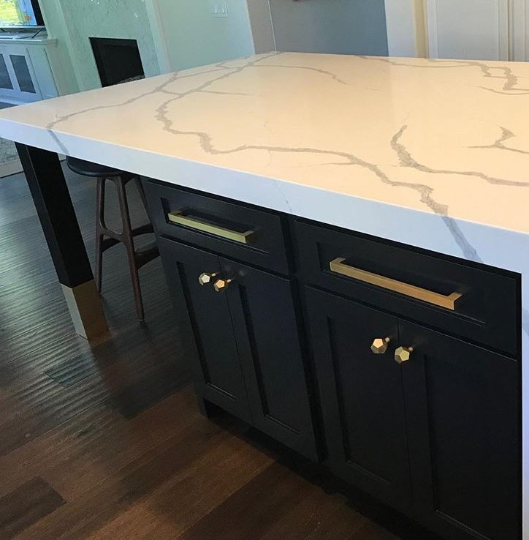Resilient and Elegant Selections for High-Quality Legs For Kitchen Island
Resilient and Elegant Selections for High-Quality Legs For Kitchen Island
Blog Article
Crucial Variables to Take Into Consideration When Choosing Legs For Kitchen Island
Choosing the appropriate legs for a kitchen island entails a careful analysis of numerous variables that can substantially influence both capability and aesthetic allure. Amongst these, the option of product plays a critical function in ensuring sturdiness, while the design should match the existing decoration. Factors to consider such as height and weight assistance are important for stability and convenience. As we explore these aspects, it becomes clear that each choice can have far-ranging implications for the total kitchen area experience. What subtleties should be thought about in each of these classifications to accomplish the optimal balance?
Product Options
When picking legs for a cooking area island, understanding the numerous product alternatives is crucial for accomplishing both aesthetic appeal and architectural integrity (Legs For Kitchen Island). The selection of product substantially influences not just the toughness of the island however likewise its total design and functionality
Wood is a preferred selection, offering heat and convenience. Solid hardwoods, such as oak or maple, supply stamina and can be tarnished or painted to match the kitchen design. Metal legs, frequently made from stainless steel or wrought iron, add a modern-day and commercial feeling while ensuring longevity and security. These materials are immune to use and can sustain considerable weight, making them perfect for larger islands.
One more alternative is crafted products, like MDF or plywood, which can be much more cost-efficient while still offering a series of surfaces. Nonetheless, they might not offer the exact same degree of security as strong timber or metal. Materials such as acrylic or glass can create a modern look, though they may need extra support to make certain security.
Ultimately, the option of material for cooking area island legs must straighten with the preferred functionality and the general theme of the kitchen.
Design And Style

When thinking about design, the shape and finish of the legs are crucial. Conical legs can give a feeling of lightness and style, while thicker, a lot more durable legs can communicate toughness and security. Additionally, the finish-- be it repainted, tarnished, or all-natural-- must complement the cabinetry and counter top products to create a unified appearance.
Moreover, the style of the legs can additionally mirror individual taste. Custom-made or decorative legs, such as those including detailed makings or special geometric shapes, can function as focal points, adding character and individuality to the cooking area. Inevitably, the ideal selection will certainly not only boost performance but additionally elevate Get More Information the aesthetic appeal, making the kitchen area island a standout attribute of the home.
Elevation Factors To Consider
Choosing the appropriate elevation for cooking area island legs is important, as it directly influences both functionality and comfort. The basic height for a kitchen island typically ranges from 36 to 42 inches, lining up with common kitchen counter elevations.

It is additionally important to make up individuals' choices and elevations. Customizing the height can ensure a comfortable experience for all relative, making the kitchen area island index a much more delightful and practical space.
Weight Support
Ensuring ample weight support for kitchen island legs is crucial for both safety and capability. The kitchen island usually serves several objectives, including cooking, eating, and additional storage space, demanding a robust support structure. When selecting legs, it is vital to think about the total weight ability called for based upon the island's intended usage and company website the materials that will certainly be placed on it.
The selection of material for the legs plays a substantial function in their weight-bearing capabilities. Solid timber, metal, and sturdy composites usually supply superior strength compared to lighter products. Furthermore, the layout of the legs-- whether they are straight, tapered, or have a pedestal type-- can influence their capacity to distribute weight properly throughout the structure.
Constantly get in touch with the producer's requirements regarding lots limits to ensure that the legs can maintain the intended weight without compromising security. In recap, choosing kitchen area island legs with adequate weight assistance is essential for developing a secure and functional culinary area.
Installation and Upkeep
Correct installation and maintenance of cooking area island legs are critical for ensuring long life and stability. This usually involves safeguarding the legs to the island base using suitable fasteners, making sure that the legs are degree and lined up.
When set up, regular maintenance is essential to preserve the honesty and look of the legs - Legs For Kitchen Island. For wooden legs, periodic cleansing with a wet cloth and application of ideal timber polish can avoid wetness damages and keep their finish. Metal legs may require a mild cleansing remedy to remove grease and crud, complied with by a dry cloth to stop corrosion formation
Furthermore, examine the legs frequently for indicators of wear or damage, such as fractures or loose joints. Tightening up screws or screws as needed can likewise extend the lifespan of the legs. By sticking to these setup and upkeep methods, homeowners can ensure that their cooking area island remains tough and aesthetically appealing for years to come.
Conclusion

Aesthetic coherence is paramount in picking the design and design of legs for a kitchen island, as these aspects substantially affect the overall setting of the area. Conical legs can offer a sense of lightness and elegance, while thicker, more durable legs can communicate toughness and security.Picking the appropriate elevation for cooking area island legs is critical, as it straight influences both performance and convenience. In recap, picking kitchen area island legs with appropriate weight assistance is necessary for creating a functional and secure cooking area.
In conclusion, choosing legs for a kitchen area island necessitates careful consideration of different variables, including product choices, style, height, weight support, and setup.
Report this page